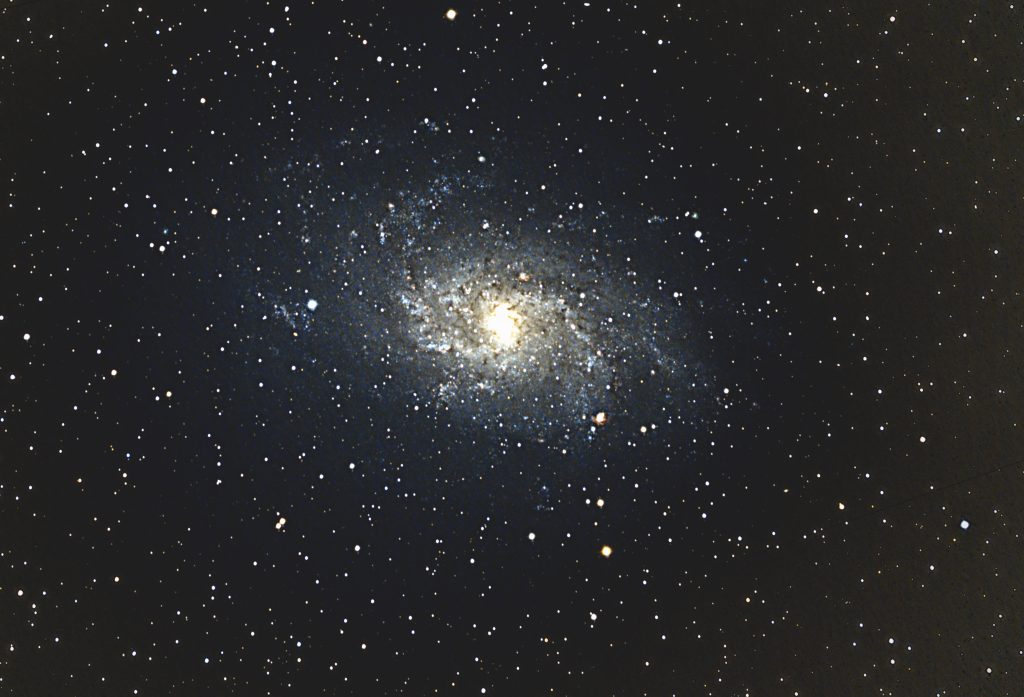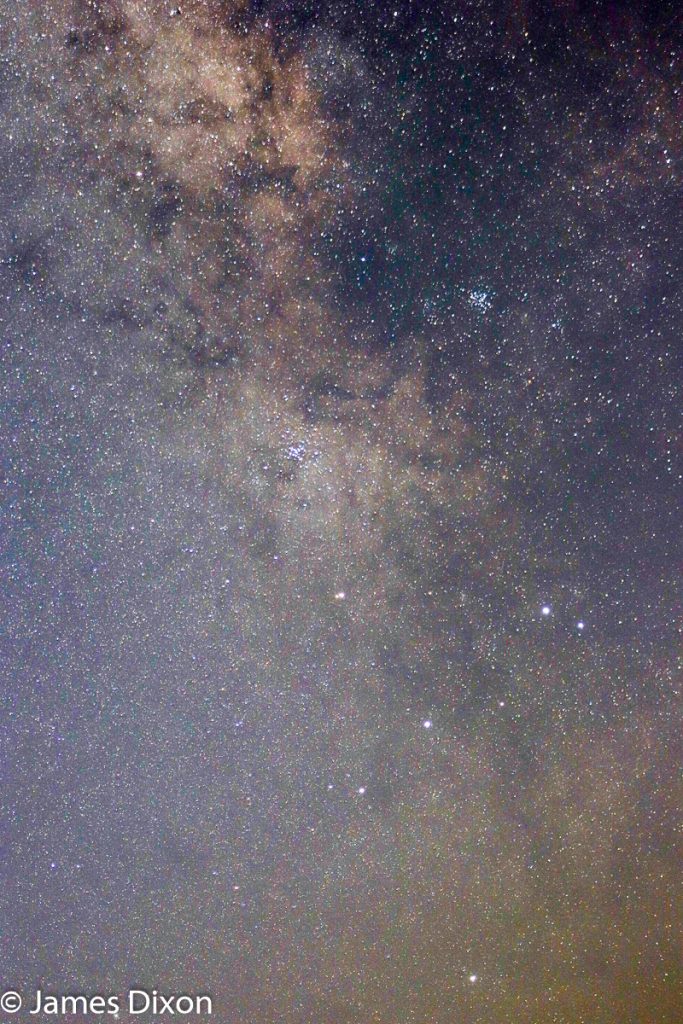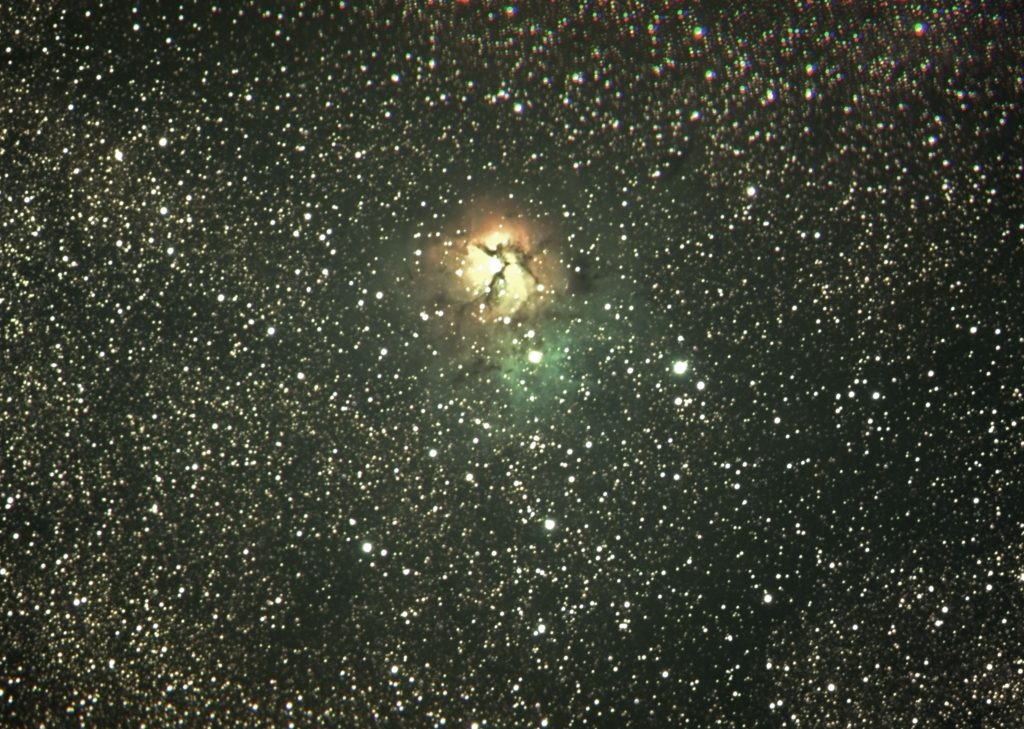It’s been a week since I shot this but on July 24/25, a hot dew laden and chigger ridden night, I shot M33 the Triangulum Galaxy with my C11, Hyperstar, and ZWO ASI 294MC Pro. This image was made from 30 individual 60 second frames. Stacked and processed with the Starizona Action Pack plus other techniques. The core might be a little overdone but I like it.
According to Wikipedia, “The Triangulum Galaxy is a spiral galaxy 2.73 million light-years (ly) from Earth in the constellation Triangulum. It is catalogued as Messier 33 or NGC 598. The Triangulum Galaxy is the third-largest member of the Local Group of galaxies, behind the Milky Way and the Andromeda Galaxy. It is one of the most distant permanent objects that can be viewed with the naked eye.”




